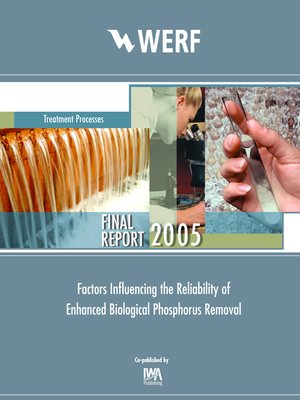Factors Influencing the Reliability of Enhanced Biological Phosphorus Removal
ebook ∣ WERF Research Report
By J. B. Neethling

Sign up to save your library
With an OverDrive account, you can save your favorite libraries for at-a-glance information about availability. Find out more about OverDrive accounts.
Find this title in Libby, the library reading app by OverDrive.



Search for a digital library with this title
Title found at these libraries:
| Library Name | Distance |
|---|---|
| Loading... |
Enhanced biological phosphorus removal (EBPR) has been used for decades to remove phosphorus from municipal wastewater because it allows facilities to meet water quality goals while minimizing chemical consumption and sludge production. However, there is still substantial variability in both the practices applied to achieve EBPR and the level of soluble phosphorus removal achieved. The objective of this research project was to develop information that can be used to help municipal wastewater treatment plants more efficiently and cost effectively remove phosphorus through EBPR processes. This project included detailed analysis of routine water quality and operating data, field testing observations, and special studies conducted over the course of the project to evaluate the variability of EBPR, factors influencing EBPR performance, and the relationship between EBPR and the presence of glycogen accumulating organisms (GAOs).







